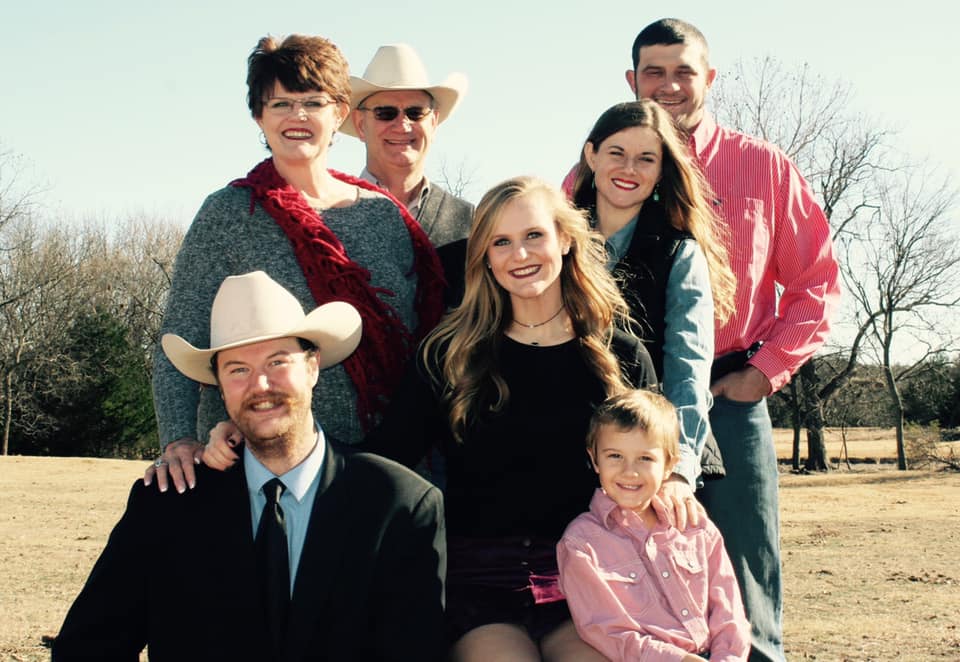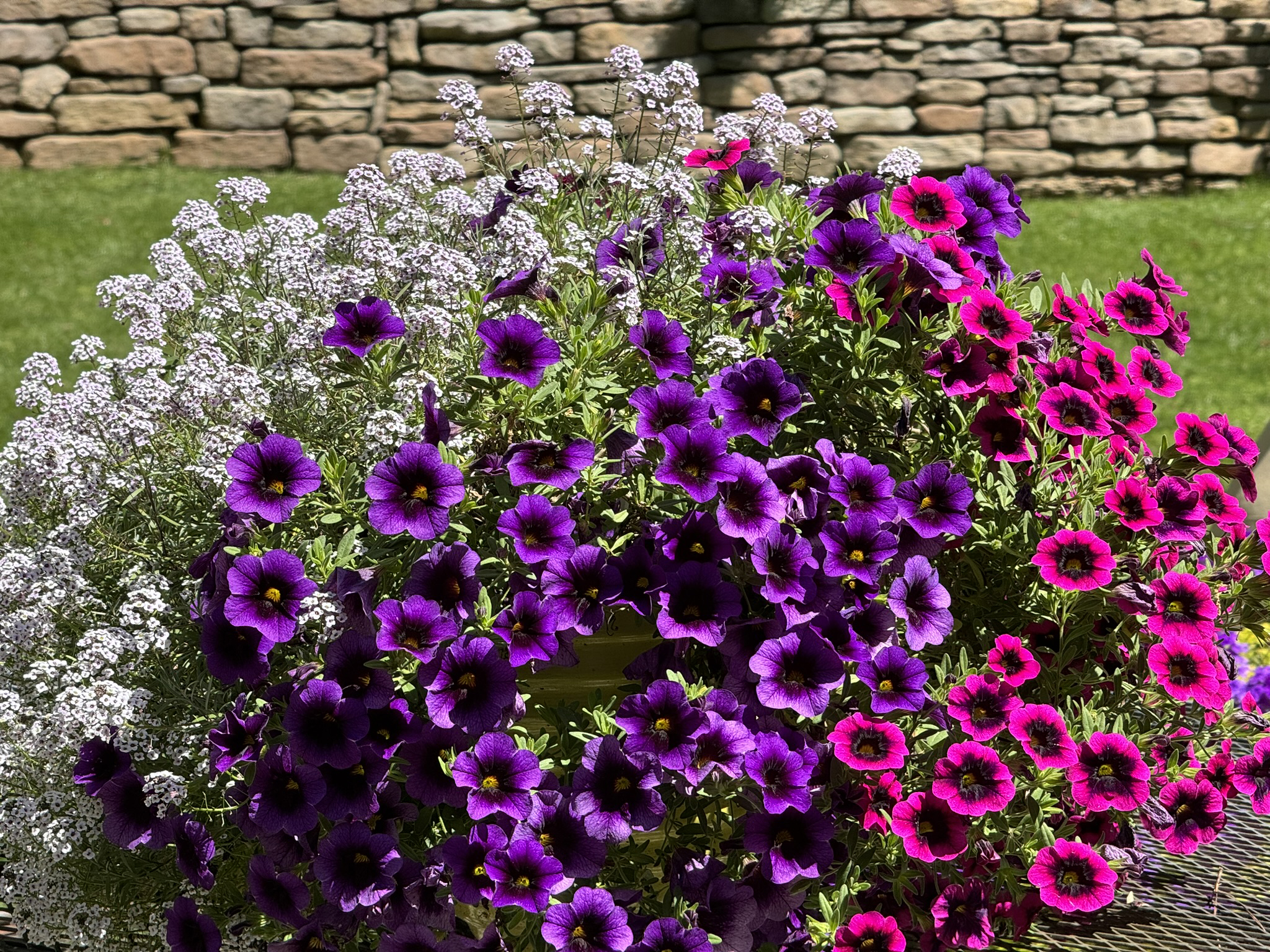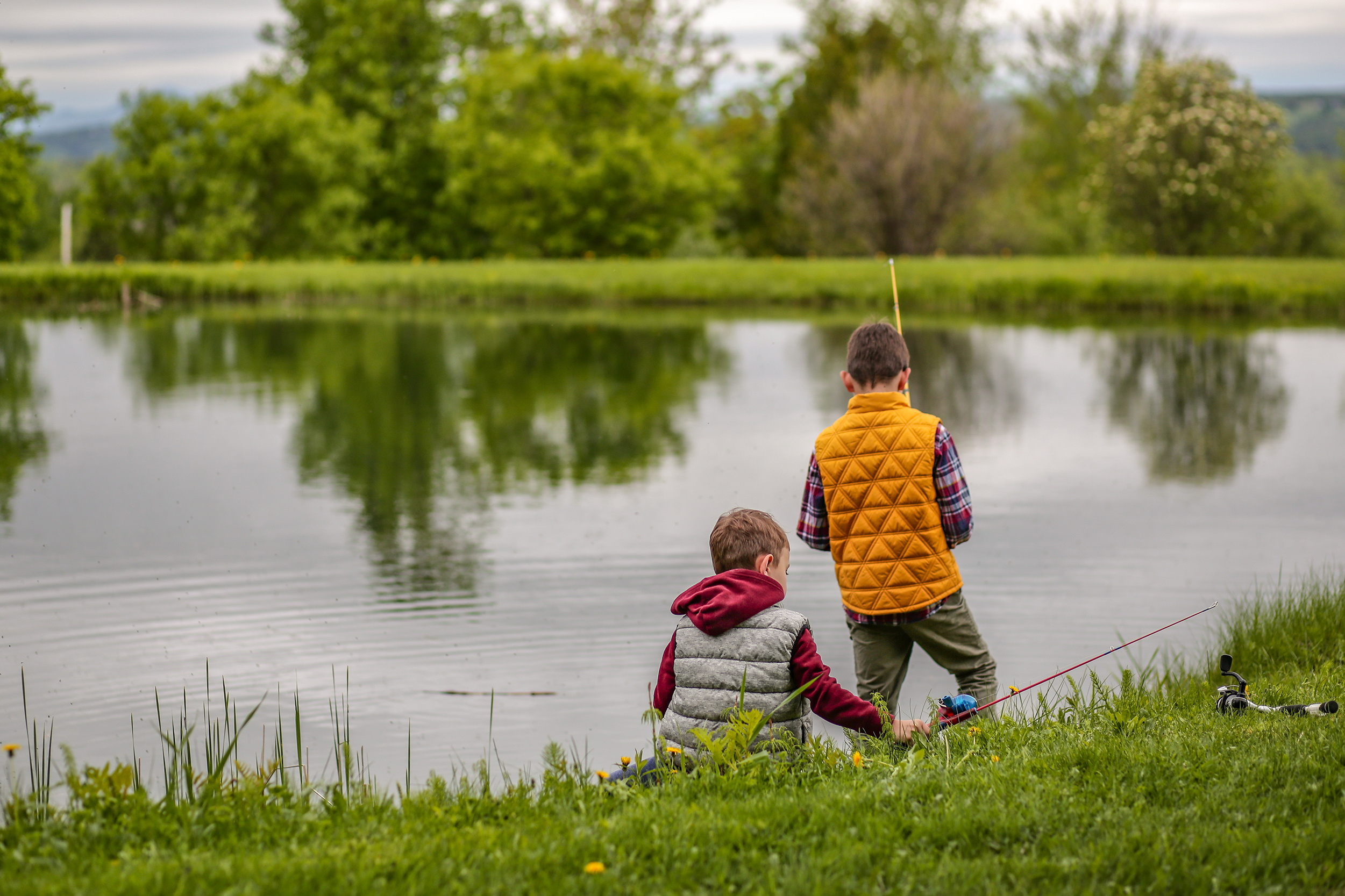Country Lifestyle
Get to Know Jacob Custer

On a Sunday afternoon, November 3, 2019, Aaron and Debby Custer, received the call every parent prays they will never receive. Their middle child and only son Jacob, had been in a feed mill accident and was being life flighted to Amarillo, Texas. Aaron and Debby had spent the weekend in Hugo, Oklahoma with Aarons parents, Warren and Marilyn Custer, and were over 400 miles from Amarillo when the call came in. As a mother I can only imagine the fear in their hearts as they made the long trip from Hugo to Amarillo keeping up with Jacob’s condition through phone calls and texts.
The day of the accident was like any normal day at the feedlot. Jacob had rode the one-man electric lift up to the top of the mill to check out an airlift (an air system that moves/blows the feed ingredients used in mixing the feed rations) located over the top of the auger cover. As Jacob was working on top of the auger cover to access the airlift which was just out of is reach, his left toe caught the lid and flipped it off causing Jacob’s left leg to land into the auger. I truly believe with every ounce of my being, in the split second when Jacob could have lost his life, God reached down and gave Jacob the physical and mental strength, needed to free himself from the clutches of the auger.
After Jacob had managed to free himself from the auger, he used his shredded jeans to make a tourniquet then called his Supervisor and told him he had just cut his leg off and needed help. Upon his Supervisor’s arrival, Jacob instructed him to take off his shirt in order to construct another tourniquet. Working together the two used the shirt and a latch bar to secure an additional tourniquet. With the help of his Supervisor, Jacob hopped to the one-man lift and rode it down all alone where he was meet with the crew he worked with. Prior to the arrival of the paramedics and life flight helicopter, two more tourniquets were tied to his left leg to try and stop the bleeding.
Upon arrival to the hospital the Doctors discovered that Jacobs leg had been disarticulated at the joint, or in layman’s terms, it had been twisted off at the knee. After the initial surgery, an infection set in and an additional three to four inches more of Jacob’s leg had to be taken off. Jacob spent a total of 25 days at the hospital in Amarillo, Texas, with his mom Debby rarely leaving his side.
Jacob ended up having a total of seven surgeries before being released to go back to Oklahoma where he did inpatient rehab in Ardmore, OK. During his two weeks at Mercy Rehabilitation Services, in Ardmore, Jacob worked on building up and getting back his core strength, which after 25 days of laying in a hospital bed, had started to deplete. After the two weeks of in-house rehab, Jacob was able to go home with his parents while he attended outpatient rehab.
Also, during his time of rehabilitation, Jacob regularly went to Mercy Hyperbaric and Wound Care to tend to the healing of his leg. A wound vac (a device that creates negative low atmospheric pressure at a constant rate. It is used on open wounds to remove fluid secretion and enhance granulation tissue and wound healing) was placed on the stump of Jacob’s leg and was not taken completely off until April 10, 2020. After the removal of the wound vac Jacob started working with Dream Team Prosthetics to get his artificial limb. Jacob said he loved working with the Dream Team. He said they were extremely professional and a just a great bunch to work with.
When working on the design for the prosthetic limb, the Dream Team designed the leg to fit Jacob’s lifestyle. Knowing Jacob would be working in a feedlot again, the prosthetic needed to be water and dust proof. The technology in the knee of the prosthetic was originally created for wounded combat veterans by Ottobock, a company out of Germany. Ottobock was hired by the DOD to create prosthetics that would allow wounded soldiers to return to active duty. The technology includes a microprocessor that records the knee’s position 100 times each second. The information is then sent to a hydraulic unit that can adjust resistance. In a nutshell the knee allows Jacob to walk down a ramp, up and down stairs and do most anything his natural leg would do. The leg also comes with six different programable modes which allow for different actions such as walking, running, or driving.
During the recovery Jacob had to overcome more than just the normal healing process. He had to learn once again how to be mobile. How to get in and out of bed or a wheelchair, how to use crutches etc., In addition to healing and mobility Jacob experienced what is known as phantom pains along with the actual nerve pain. He said the nerve pains were the worse but still today experiences phantom symptoms such as a sensation of his foot itching. Jacob said the lowest points during his journey where the nights at the hospital when he couldn’t sleep. Those nights were tough, but the mental battle was the hardest to conquer.
When I asked Jacob, what kept him motivated his answer was simple. He said from the day the accident happened he kept telling himself he wanted to go back to work for the feed yard. Over the last several years he has really come to love the cattle feeding industry and plans to continue his career in the cattle feeding world. The old age saying of, if you love your job you will never work a day in your life fits Jacob to a “T”!
Accidents are a normal part of any industry, however in the agriculture industry it seems like we hear of more severe injuries from machinery and tools such as augers. I asked Jacob if he felt the accident could have been prevented or if more safety measures should be put in place. Jacob’s said he felt a large majority of accidents could be prevented with the proper behavior put in place, but complacency will get you every time. He said you can build a cage around a bomb but that won’t keep some one from cutting it open and punching the red button. At the end of the day your safety is in your own hands and you are the only one who will deal with the consequences of your actions. Before you start every workday remember why you work, or who you work for (i.e. family, friends) and think of them before you do something perilous just to shave time.
I am a firm believer, that with every negative there is a positive. When I asked Jacob if he felt there was a positive from his accident, he said absolutely. Jacob said the accident had allowed him to spend more time developing himself as a person and changed his perspective on a lot of things. He said he now has a more positive outlook on life these days and shared with me a quote by Ray Wylie Hubbard he once saw that really stuck with him throughout the entire ordeal. The quote is “On days where my gratefulness exceeds my expectations, I have good days.”
Jacob’s advice to others who have lost a limb, “don’t give up!” It’s hard but you’re only limited by what you tell yourself you can’t do. There are people everywhere who will support you on the journey, and just know there’s a whole lot of life after limb loss.
After almost loosing his life that dreadful day in November, Jacob returned this past June to the same feedlot he last left on a life flight. Jacob is back living his life doing what he loves and I for one will always be grateful God granted him another chance. Having known Jacob since the day he was born I always knew he was special with his kind ways, big heart and special gift of gab. I just never knew the inner strength that lay quietly inside.
Until Next Time …
Read more in the November 2020 issue of Oklahoma Farm & Ranch.
Country Lifestyle
Superbells Blackcurrant Punch

Rare Color for Baskets and Mixed Containers
By Norman Winter | Horticulturist Author and Speaker
The Garden Guy has become completely mesmerized by a bowl of blackcurrants. You can guess I am having a little fun with you. I am not talking about the fruit but the flowers referred to as Superbells Blackcurrant Punch.
This year most everything came through the winter including a few plants I am even asking where did you come from? The spring has been long, gloriously beautiful and still in progress and all of the Superbells calibrachoas taking your breath away with their beauty.
I have written about the ‘Punch Group’ but never about a single color. I love every one of them but this year I just have to dedicate a column to Superbells Blackcurrant Punch. Yes, I do have a couple of yellow bowls where they are showing out but in reality, they are mixed in a lot of my containers.
Superbells Blackcurrant Punch has won a ‘baker’s dozen’ of awards, Top Performers, and Perfect Scores north to south and east to west. Like the others they reach about 12-inches tall with up to a 2-foot spread. They obviously have some cold tolerance as mine have come through the winter. The caveat is they did spend five consecutive nights in the garage. Their beauty in March and April has defied logic.
The color which is so rare in the garden makes it a must have plant. I found a Proven Winners description from several years ago that nails it, Superbells Blackcurrant Punch has bright fuchsia-colored petals with velvety black centers and a subtle yellow in the throat. It will be hard to pass by if you are lucky enough to find them at the garden center.
Your success will come from growing them in containers with a very good potting soil. Give them plenty of sun. There is a lot of garden gossip that says you can’t grow them with Supertunias, Superbenas or a plethora of other plants because of different water requirements.
In the South we water containers and baskets every day unless we get rain. These containers drain freely so life is the same for all the plants. Since we water so frequently, we need to feed on a regular basis. The Garden Guy mixes up the blue water-soluble mix and feeds the container grown plants about every three weeks. At some point the Superbells Blackcurrant Punch will look tired and in need of a trim. This haircut so to speak will generate new growth, and blooms for the fall.
Your choice of partners is only limited by your imagination. I love them with Lemon Coral sedum, Superbena Cobalt verbena, Blush Princess sweet alyssum and mixed with other calibrachoas like Superbells Grape Punch and Magic Pink Lemonade. They are heavenly with Primo Wild Rose heuchera and Superbena Whiteout verbena.
All of the Superbells attract both hummingbirds and butterflies. The butterflies I have photographed so far have all been Eastern Tiger Swallowtails. You have to admit that’s not bad for flowers that are so pretty. Planting season is here, keep a spot open in your mixed-container recipes for Superbells Black Currant Punch or some of the other Superbells calibrachoas that now total 41. Follow me on Facebook @NormanWinterTheGardenGuy for more photos and garden inspiration.
Country Lifestyle
Western Housewives – June 2024

Life consists of small events that define us. Sometimes, it’s something as simple as eating cake with your two-year-old at midnight at your sister’s wedding. Sometimes, it’s something as painful as taking your two-week-old to the emergency room with RSV and living there for a week. Both are moments that changed me, and both are moments that I’ll remember forever.
Often my defining moments have happened on the back of a horse. I guess that is because that is where I have spent most of my life. It has made me pay special attention to each horse I have ridden during different stages of my life.
My first horse was a big bay horse that was must have reminded me of Greek mythology because it took me about two seconds to name him “Hercules.” He was the perfect mount for a five-year-old that acted tough but was secretly scared of her own shadow. Once I got Hercules, I could start going to work with my dad. We gathered wheat pastures and road pens, and he let me sit in the round pen on Hercules while he worked his sale horses. At the ripe age of five I was a pretty seasoned pen rider and had the sour disposition to prove it.
One morning we had a lot of wheat pasture freshies to turn out. Naturally, they ran off as soon as they got off the truck. Babies cry, and wheat pasture cattle run off the truck; I don’t make the rules.
My Dad had to leave me and get in front of the herd to keep them from crashing into the fence. I’m sure he told me just to stay put, but Hercules got excited by all the commotion and started following the impending stampede. Now I realize that I was safe the entire time, but, at that moment, I was certain my life was over. I was dramatic even as a youngster. Would Hercules ever stop? Would he try and jump the sprinkler tracks? What if he runs through the hot wire? And most importantly, what will I tell my friends?
About the time I was ready to jump into the dirt my Dad ran up beside me and helped me stop Hercules. I was safe, my adrenaline was pumping and I was promised an Allsup’s Coke for all my troubles. That was a defining moment in my life. I realized the more danger you got yourself in to, the much bigger the condolence award. As long as I was able to keep it to an Allsup’s Coke level of danger I would be just fine.
The next horse I truly loved was named “Alotofbull” He was anything but full of bull. He was big, cowy, and athletic. He scared me just a little but that’s what made me love him the most. My Dad and I won countless events on Alotofbull. My Dad has true horsemanship pumping through his veins, but I can only credit my riding success to Alotofbull. He made things easy for me and I felt I was nothing without him.
Even after all the ribbons, the moment I remember the most about him wasn’t in the showpen. it was in the middle of nowhere on a place we called “The Cain.” The Cain was where I spent many fall afternoons and summer mornings. It was full of Sandhills, cactus that were found of my backside every time my seat left the saddle, and absolutely no sign of civilization. We would push cows to water, move pastures, and do other slow-paced things that were good for the horse and for the mind. I loved it there.
One afternoon in the middle of June, my Dad and I were moving some cattle to water. After we were done we came upon a set of old pens that my Dad had branded calves in with his Dad a long time ago. My Dad got quiet and solemn. Traits that were unusual for him. He started to reminisce of times long ago and told me how much he wished all his kids had gotten to know his Dad before he had passed away many years prior. I was only 14 at the time, and I was having trouble holding back tears myself. I leaned forward and played with Alotofbull’s black mane. I knew my grandfather had been a special man and I knew my Dad had cherished him. It made me see my Dad in a different light going forward. Yes, he was strong and resilient, but he was also human, just like the rest of us. He had a vulnerability in his life, too. It was a moment that taught me not to be afraid to talk about the hard stuff but to always press on. No matter what.
Many years later, I found myself in beautiful Oklahoma on a horse named “Reuben.” He was my then-boyfriend’s horse and was the only quick and little horse I had ever ridden. He was spunky and made me feel like better help than I was as we gathered pairs to wean that morning.
The sun was just coming up over the cottonwood trees, making the dewy grass shine. I looked over at the man beside me and just knew I would spend the rest of my life doing this very thing with him. I didn’t care if we ever had money or much of anything, really. As long as we were together, loving God, and riding good horses, I didn’t care about anything else.
About 12 hours later, after a long day and a few incidents that may or may not have involved me getting run over by a yearling, that same man proposed to me. We had never talked about it out loud, but I guess God had put it in both of our hearts. It was a moment that, of course, changed the rest of my life. It taught me not to overthink things when they are right and that an Oklahoma cowboy was just what my life needed.
I’ve had many horses and many defining moments in my life. Sometimes, I have loved the horse, and sometimes, I have not. The same goes for the moments. Nevertheless, each horse and moment has taught me something. After all this time, I am convinced that no matter how old I get, I will never be too old to ride a good horse because I will never be too old for a defining moment.
That being said, if one or two of my life lessons could involve another Allsup’s Coke, that’d be all right by me.
Country Lifestyle
A Beginners Guide to Fishing

It seems that the subjects of countless profiles in the past year have mentioned, whether in passing or as part of a larger discussion, that the COVID-19 pandemic changed Oklahoma’s landscape in numerous ways. By and large, the overwhelming observation is that Okies in urban areas have begun migrating to the country, and are embracing the rural lifestyle. Small farms are popping up with a variety of animals, and gardens are being planted where there wasn’t one before.
It made me think that there are likely people out there who don’t know the basics of one of Oklahoma’s favorite pastimes: fishing.
With countless lakes, rivers, and streams teeming with a diverse array of fish species, Oklahoma offers ample opportunities for anglers of all ages and skill levels to cast their lines and reel in memorable catches.
If you’re new to fishing and eager to dip your toes into the water, don’t be afraid. Here are a few basic concepts to get you started.
Understanding Oklahoma’s Fishing Scene
Before you embark on your angling adventure, it’s essential to familiarize yourself with Oklahoma’s diverse fishing opportunities. From largemouth bass in the renowned Lake Texoma to catfish in the Red River, each region of the state offers its own distinct fishing experience. Consult resources such as the Oklahoma Department of Wildlife Conservation website and local fishing guides to discover prime fishing spots near you and learn about the regulations and licensing requirements specific to Oklahoma waters.
Gear Up
One of the first steps in getting started with fishing is acquiring the necessary gear. For beginners, a basic fishing rod and reel combo will suffice. Opt for a versatile spinning or spincast reel paired with a medium-action rod, which offers flexibility and ease of use for a variety of fishing techniques. Additionally, invest in essential tackle such as hooks, sinkers, bobbers, and a selection of artificial lures or live bait, depending on your preferred fishing style and target species.
Learn the Ropes
Before you hit the water, take some time to familiarize yourself with the fundamentals of fishing. Practice tying basic fishing knots, which are essential for securing your line and attaching hooks and lures. Watch online tutorials or consult instructional books and videos tailored to beginner anglers to learn casting techniques, proper rod handling, and best fish handling practices.
Choose Your Fishing Spot
Oklahoma boasts an abundance of fishing hotspots, ranging from expansive reservoirs and scenic rivers to hidden ponds and urban lakes. Consider factors such as proximity, accessibility, and the type of fish you’re targeting when selecting your fishing spot. Popular destinations for beginners include Lake Hefner in Oklahoma City, Lake Thunderbird near Norman, and the Illinois River in northeastern Oklahoma, known for its scenic beauty and excellent trout fishing.
There are also countless farm ponds, but, I hope it goes without saying, you must obtain the land-owner’s permission to access their lands and fish their ponds.
Follow Fishing Regulations
Before you embark on your fishing excursion, familiarize yourself with Oklahoma’s fishing regulations and licensing requirements. The ODWC website provides up-to-date information on fishing seasons, bag limits, size restrictions, and license fees. Remember to obtain a valid fishing license and any additional permits required for specific fishing locations or species, as failure to comply with regulations can result in fines and penalties.
Practice Patience and Persistence
Fishing is as much about patience and persistence as it is about skill and technique. Be prepared to spend time waiting for the fish to bite, and don’t get discouraged if you don’t reel in a trophy catch on your first outing. Experiment with different baits, lures, and fishing techniques, and don’t be afraid to seek advice from experienced anglers or local bait shops. You’ll soon become more proficient and confident in your fishing abilities with practice and perseverance.
By gearing up with the right equipment, learning essential fishing skills, choosing the perfect fishing spot, following regulations, and embracing patience and persistence, beginners can set themselves up for a rewarding and enjoyable fishing experience in the Sooner State.
References:
Oklahoma Department of Wildlife Conservation (ODWC). “Fishing Regulations.” wildlife.ok.gov/fishing/regulations
ODWC. “Fishing in Oklahoma.” wildlife.ok.gov/fishing
-

 Country Lifestyle7 years ago
Country Lifestyle7 years agoJuly 2017 Profile: J.W. Hart
-

 Outdoors6 years ago
Outdoors6 years agoGrazing Oklahoma: Honey Locust
-

 Country Lifestyle3 years ago
Country Lifestyle3 years agoThe Two Sides of Colten Jesse
-

 Outdoors4 years ago
Outdoors4 years agoPecan Production Information: Online Resources for Growers
-

 Equine7 years ago
Equine7 years agoUmbilical Hernia
-

 Attractions7 years ago
Attractions7 years ago48 Hours in Atoka Remembered
-

 Farm & Ranch6 years ago
Farm & Ranch6 years agoHackberry (Celtis spp.)
-

 Outdoors3 years ago
Outdoors3 years agoSuzy Landess: Conservation carries history into the future




